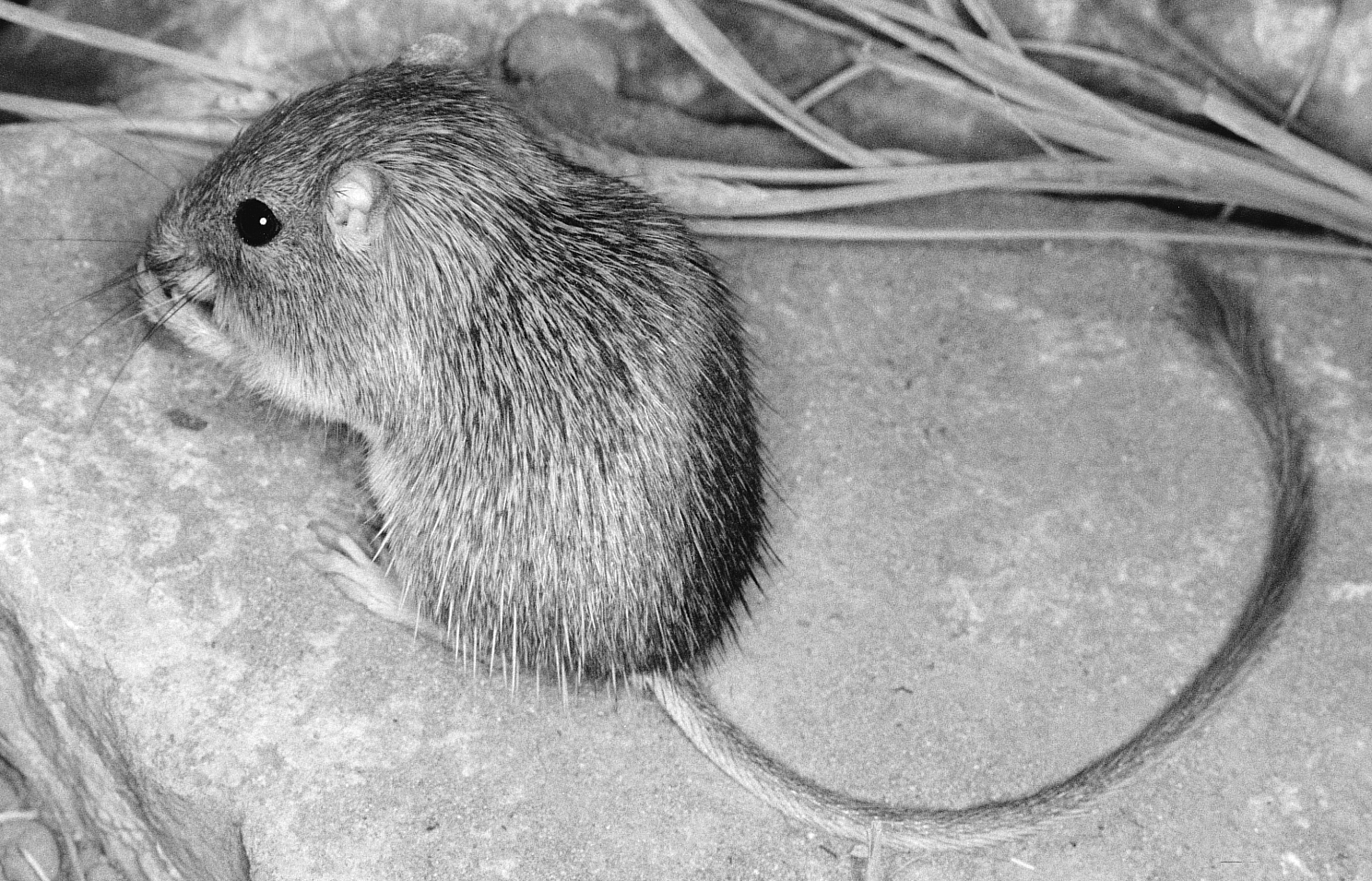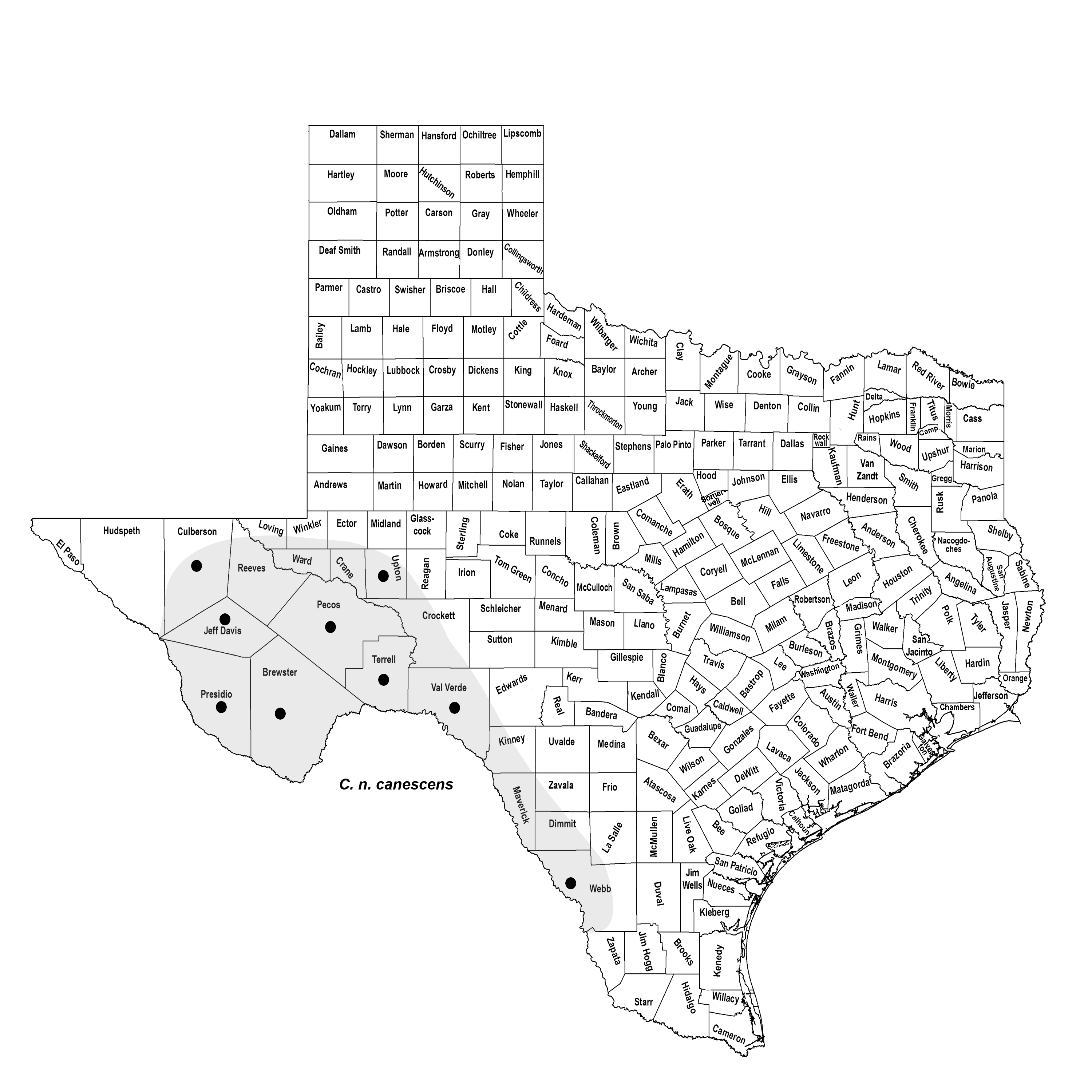NELSON'S POCKET MOUSE
Chaetodipus nelsoni Merriam 1894
Order Rodentia : Family Heteromyidae
DESCRIPTION. A medium-sized pocket mouse with coarse pelage and numerous black-tipped spines on rump; tail longer than head and body, sparsely haired on basal half, the terminal half crested, penicillate, and indistinctly bicolor, darker above than below; upperparts drab gray, heavily lined with black; underparts pure white; soles of hind feet blackish. Dental formula: I 1/1, C 0/0, Pm 1/1, M 3/3 × 2 = 20. Averages for external measurements: total length, 187 mm; tail, 104 mm; hind foot, 22 mm. Weight, 14–17 g.

DISTRIBUTION. A Mexican form that commonly occurs in Texas in the southern and central Trans-Pecos region and just east of the Pecos River and the Rio Grande. Its eastern distributional limits are reached on the western Edwards Plateau.

SUBSPECIES. Chaetodipus n. canescens.
HABITS. This is a rock-loving species. In Big Bend National Park, in southern Brewster County, it occurs most commonly at the base of the Chisos Mountains at altitudes ranging from 700 to 1,450 m. There it is found in rocky areas supporting sparse stands of chino grass, sotol, bear grass (Nolina), and candelilla; sandy washes seem to be avoided. At Big Bend Ranch State Park, in southern Presidio County, this pocket mouse has a strong preference for desert scrub and grassland vegetation, although it also was taken in riparian and juniper rough-land habitats.
In 1962 in the Big Bend region, Richard Porter found that the breeding season begins in February, the peak of pregnancy among females is reached in March, and juveniles entered his live traps in April. By inference, therefore, the gestation period is about 1 month, and the young leave the nest when about 4 weeks of age. Pregnant females were captured in each month from March through July. The number of embryos per litter ranged from two to four (average 3.2).
The annual turnover in the population he studied was about 86%; that is, only 14 of each 100 individuals survived from one year to the next. In 1958, Keith Dixon, working on the Black Gap Wildlife Management Area in the Big Bend, recorded two individuals marked as juveniles that survived for at least 30 months in the wild, one other for 24 months, and two others for about 20 months.
Chaetodipus nelsoni is strictly nocturnal; at night it forages primarily for seeds, including those of mesquite, creosote bush, and prickly pear. In addition to seeds, it also may consume other plant parts and insects.
Porter reported that nelsoni was more active in winter (December) than either of the other two pocket mice (Perognathus flavus and Chaetodipus eremicus) on his study area. It appears that C. nelsoni does not hibernate.
POPULATION STATUS. Common. Nelson's pocket mouse is common throughout its range in Texas.
CONSERVATION STATUS. The IUCN lists Nelson's pocket mouse as a species of least concern, and it does not appear on the federal or state lists of concerned species. It does not appear to face any serious threats at this time.
From The Mammals of Texas, Seventh Edition by David J. Schmidly and Robert D. Bradley, copyright © 1994, 2004, 2016. Courtesy of the University of Texas Press.
Natural Science Research Laboratory
-
Address
Museum of Texas Tech University, 3301 4th street, Lubbock, TX 79409 -
Phone
806.742.2486 -
Email
nsrl.museum@ttu.edu

